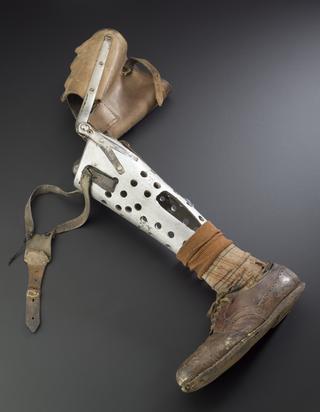

Wooden floor-standing structure, a copy of a 16th century design, originally described as an ‘elevating rack’ and believed to be based on the ‘dropping ladder’ traction technique outlined by Hippocrates around 400BCE, constructed in pine and made in England, 1920-1950.
This simple free-standing wooden structure is a copy of a 16th century device, originally referred to as an ‘elevating rack’, that was made in the first half of the 20th century. It is believed to be based on the ‘falling ladder’ technique that was in use for many hundreds of years before it was described by Hippocrates in around 400BCE.
The original concept had a patient attached via ropes to a ladder-like structure. The ladder was then raised before being dropped suddenly from a height to produce an easing force to the spine Hippocrates promoted the use devices, similar to ‘dropping ladders’, for the treatment of scoliosis and other forms of spinal curvature. To reduce the curvature, patients were shaken and otherwise manipulated while tied to the ladder, or suspended from the top rung. They could be placed in either an upright position or turned upside down, depending on the site and degree of spinal deformity. The weight of the patient’s trunk and limbs were intended to help straighten the spine. In this copy, the box-like structure attached halfway up the ‘ladder’ is thought to represent a means to raise and lower ropes and lock them in position.
Details
- Category:
- Orthopaedics
- Collection:
- Sir Henry Wellcome's Museum Collection
- Object Number:
- A654603
- Materials:
- pine
- type:
- elevating rack




